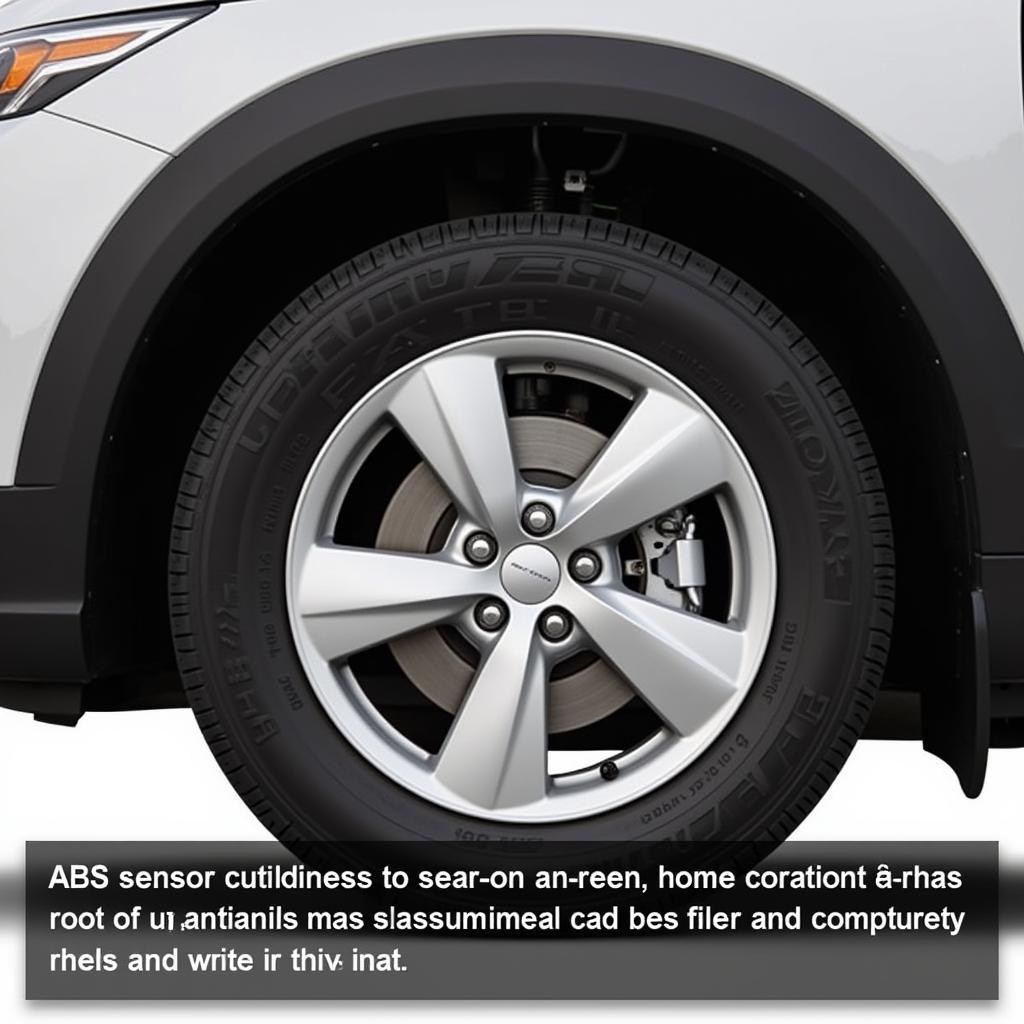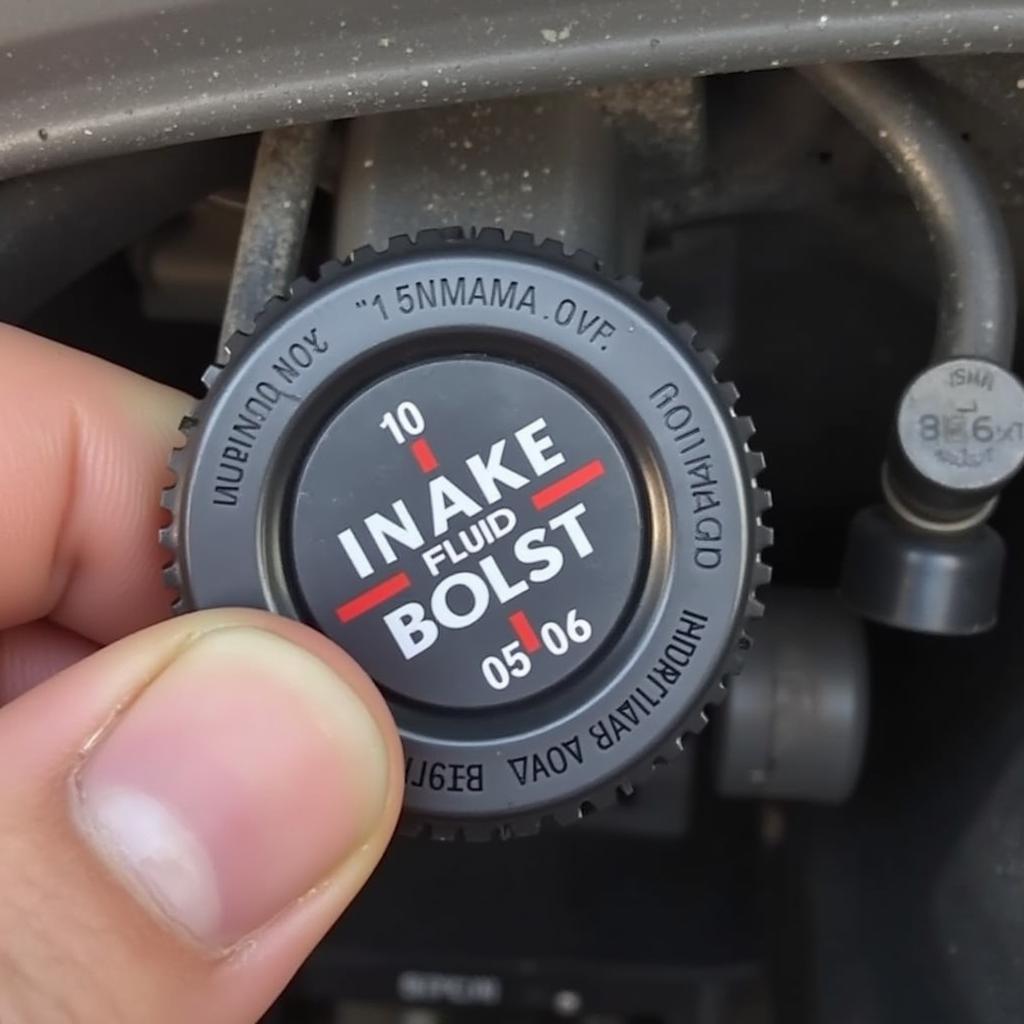If you’re driving your 1994 Buick Lesabre and a brake warning light pops up on the dashboard, it’s crucial to address the issue immediately. This warning light signals a potential problem with your braking system that could compromise your safety and that of your passengers. This comprehensive guide will walk you through the common causes of a 1994 Buick Lesabre brake dash warning and provide you with potential solutions.
Understanding the Brake Warning Light
The brake warning light on your Buick Lesabre’s dashboard is designed to alert you about potential issues within the braking system. It typically illuminates when you engage the parking brake or if there’s a problem with your hydraulic brake system, low brake fluid, or a fault in the ABS system.
Common Causes of a 1994 Buick Lesabre Brake Dash Warning
Here’s a breakdown of the most common reasons your 1994 Buick Lesabre might display a brake warning light:
1. Low Brake Fluid
Low brake fluid is one of the most frequent culprits behind a glowing brake warning light. Brake fluid is the lifeblood of your car’s braking system. It transmits the force you apply to the brake pedal to the brake calipers, which then squeeze the brake pads against the rotors, effectively slowing down or stopping your vehicle. Over time, brake fluid levels can decrease due to leaks or wear and tear.
Solution:
- Check your brake fluid level. Open the hood and locate the brake fluid reservoir. It’s usually a translucent plastic container marked with “brake fluid.”
- Add brake fluid if necessary. If the fluid level is low, carefully add the correct type of brake fluid for your 1994 Buick Lesabre until it reaches the “Max” line.
- Inspect for leaks. If you notice a consistent need to add brake fluid, it indicates a leak that needs immediate attention. Take your car to a mechanic to identify and repair the leak.
2. Worn Brake Pads
Brake pads are designed to wear down over time. As you apply your brakes, the friction material on the pads gradually wears away. When the pads reach a certain level of wear, a sensor (if equipped) will trigger the brake warning light on your dashboard.
Solution:
- Inspect your brake pads. If you’re comfortable doing so, you can check the thickness of your brake pads visually. If they appear thin or you’re unsure, it’s best to have a mechanic assess their condition.
- Replace worn brake pads. If your brake pads are worn down, it’s crucial to have them replaced promptly to ensure optimal braking performance and safety.
3. Faulty Brake Caliper
The brake calipers house the pistons that push the brake pads against the rotors. A sticking or seized brake caliper can cause uneven brake pad wear, reduced braking performance, and trigger the brake warning light.
Solution:
- Have your brake calipers inspected. A mechanic can check the condition of your brake calipers and identify any issues such as sticking pistons or leaks.
- Repair or replace faulty calipers. Depending on the severity of the problem, the mechanic may be able to repair the caliper. However, replacement is often the most reliable solution for a faulty brake caliper.
4. ABS System Malfunction
Modern cars like your 1994 Buick Lesabre often feature an Anti-lock Braking System (ABS). This system helps prevent wheel lockup during hard braking, improving vehicle control and stability. If the ABS system experiences a malfunction, it can trigger the brake warning light.
Solution:
- Retrieve ABS fault codes. A mechanic can use a diagnostic tool to read fault codes stored in your car’s computer, helping pinpoint the source of the ABS problem.
- Repair the ABS issue. Addressing ABS problems usually involves replacing faulty sensors, control modules, or other components within the system.
 ABS Sensor
ABS Sensor
5. Parking Brake Engaged
It might seem obvious, but a surprisingly common reason for the brake warning light to stay on is an improperly disengaged parking brake. Always double-check that the parking brake is fully released before driving.
Solution:
- Make sure the parking brake is fully disengaged. If the parking brake is even slightly engaged, it can trigger the warning light and potentially cause premature wear to the braking system.
Additional Tips and Considerations
- Regular Brake System Inspections: It’s recommended to have your brake system inspected annually or more frequently if you drive in harsh conditions.
- Quality Brake Components: When replacing brake parts, always opt for high-quality components from reputable brands.
- Don’t Ignore the Warning: Never ignore a brake warning light. Addressing brake problems promptly can prevent further damage and ensure your safety on the road.
Conclusion
A 1994 Buick Lesabre brake dash warning is a serious issue that should never be ignored. By understanding the common causes and following the outlined solutions, you can ensure your braking system remains in optimal condition, providing you with peace of mind and a safe driving experience. If you’re unsure about any aspect of your car’s braking system, always consult with a qualified mechanic for diagnosis and repair.

